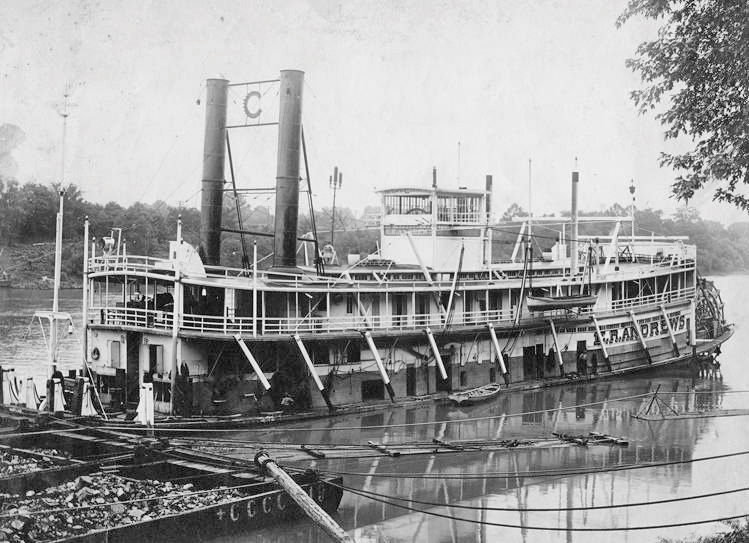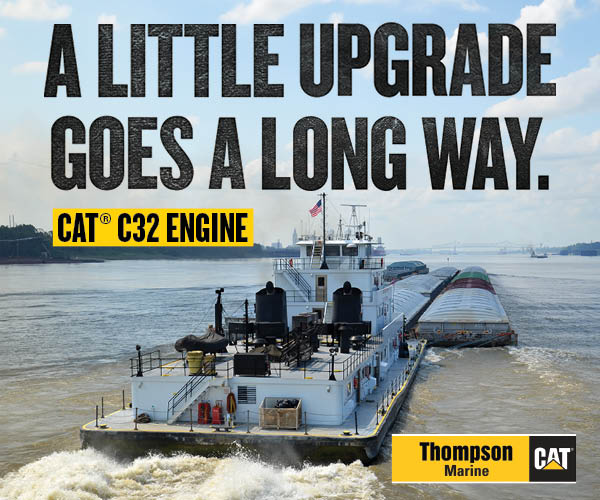With the recent passing of river historian Gerald “Jerry” Sutphin of Huntington, W.Va., the book he co-authored with Richard Andre in 1991, “Sternwheelers On The Great Kanawha River,” came to mind. Included in the section dealing with towboats was a vessel that was always intriguing, the steam sternwheel E.R. Andrews of the Campbell’s Creek Coal Company (CCCC).
The CCCC had lost two towboats to fire, the George F. Dana in October 1885 and the John Dana, which burned at Dana (now Port Amherst), W.Va., on the Kanawha River on April 14, 1893. Capt. E.A. Burnside had been a pilot aboard the George F. Dana and master of the John Dana. Both fires were reportedly caused by lanterns that had been knocked over, and as a result, Capt. E.A. had long advocated building a “fireproof” vessel.
Capt. E.A. Burnside personally designed much of the new boat, and S.F. Dana, an officer in CCCC and the subsidiary company, Ohio & Kanawha Transportation, contributed some ideas for the vessel as well. The Howard Ship Yards and Dock Co., Jeffersonville, Ind., was selected as builder, and Burnside was on site during most of the construction. The hull of the boat was of innovative composite construction, being primarily of steel sides and framing with a bottom of 4-inch-thick oak planks. It measured 165 feet by 32.5 feet.
The engines of the new vessel, which was to be named Mascot, were of 20-inch bore with 8-foot stroke. Two more innovations were the Ward-patented water tube boilers, which were allowed 220 pounds pressure, and the pitmans connecting the engines to the sternwheel, fabricated of steel tubes with steel trusses, rather than the traditional wooden beam. The machinery was rated 780 hp. with the wheel turning 16 rpm. The innovations continued with the hogchain braces, which were round, steel tubes. The main deck cabin was of steel, but above that the boat was of traditional wooden construction.
The boat departed Jeffersonville on August 15, 1894, and by this time it had been named E.R. Andrews, honoring a Rochester, N.Y., financier and stockholder in CCCC. The Andrews would be the first towboat on the Kanawha River to be fully equipped electrically, and it even had a telephone on board. The phone was mounted on the forward bulkhead of the cabin, and outside was a large reel of telephone cable, which could be run out and hooked up at the company landings and could also be run ashore and connected to telephone lines along the way (a far cry from the instant cellular communications of today!).
The E.R. Andrews had a steam steering gear, steam-driven capstans and a Link Belt conveyor system for moving coal from fuel flats to the deck room. Overall, it would seem that all this innovation would make the Andrews a dream of a towboat that was ahead of its time. However, as with many new and innovative things, the first two years of operation were fraught with frustrations.
There were problems with the two Ward boilers, and they were replaced in 1895 with six Western-style boilers. The steel pitmans caused vibration issues, and they were soon removed and replaced by wooden ones. The Link Belt conveyor system worked but was more trouble than necessary, so it came off as well. After these teething problems, the E.R. Andrews settled down to being a productive steamboat and served in the CCCC/O&K fleet for another 17 years. Also documented to carry passengers, it was often used for excursions in the Kanawha Valley. Burnside would become a larger-than-life figure as the manager of transportation for the firms and was legendary throughout the river system.
In June 1912, the Andrews was sold to the Barrett Line of Cincinnati and renamed Oscar F. Barrett. According to Way’s Steam Towboat Directory, the cabin burned off at Cairo, Ill., in 1916 (so much for “fireproof”) and was rebuilt. In 1919, it was working under charter to Federal Barge Line with Capt. Bob Boles as master. In 1925, it was sold to Standard Oil of Louisiana, which did not change the name.
During the flood of 1927, the boat did a lot of rescue work in the Greenville, Miss., area, evacuating refugees. It was laid up in November 1933 and listed as “abandoned.” Some years afterward, it was used as a quarterboat.
Photo caption: The E.R. Andrews with a coal tow. (From the author’s collection)




